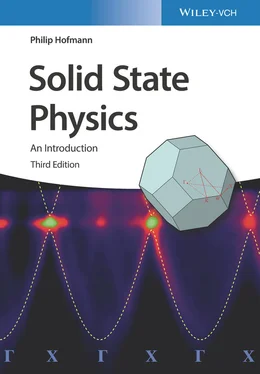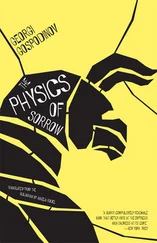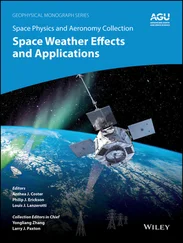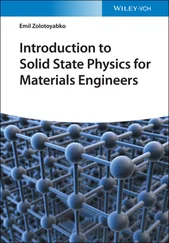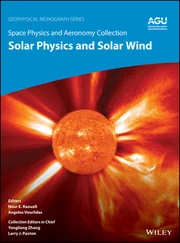Philip Hofmann - Solid State Physics
Здесь есть возможность читать онлайн «Philip Hofmann - Solid State Physics» — ознакомительный отрывок электронной книги совершенно бесплатно, а после прочтения отрывка купить полную версию. В некоторых случаях можно слушать аудио, скачать через торрент в формате fb2 и присутствует краткое содержание. Жанр: unrecognised, на английском языке. Описание произведения, (предисловие) а так же отзывы посетителей доступны на портале библиотеки ЛибКат.
- Название:Solid State Physics
- Автор:
- Жанр:
- Год:неизвестен
- ISBN:нет данных
- Рейтинг книги:4 / 5. Голосов: 1
-
Избранное:Добавить в избранное
- Отзывы:
-
Ваша оценка:
- 80
- 1
- 2
- 3
- 4
- 5
Solid State Physics: краткое содержание, описание и аннотация
Предлагаем к чтению аннотацию, описание, краткое содержание или предисловие (зависит от того, что написал сам автор книги «Solid State Physics»). Если вы не нашли необходимую информацию о книге — напишите в комментариях, мы постараемся отыскать её.
Solid State Physics
Solid State Physics
Solid State Physics
Solid State Physics — читать онлайн ознакомительный отрывок
Ниже представлен текст книги, разбитый по страницам. Система сохранения места последней прочитанной страницы, позволяет с удобством читать онлайн бесплатно книгу «Solid State Physics», без необходимости каждый раз заново искать на чём Вы остановились. Поставьте закладку, и сможете в любой момент перейти на страницу, на которой закончили чтение.
Интервал:
Закладка:
Table of Contents
1 Cover
2 Title Page Solid State Physics An Introduction Third Edition Philip Hofmann
3 Copyright Author Prof. Philip Hofmann Aarhus University Department of Physics and Astronomy Ny Munkegade 120 8000 Aarhus C Denmark Solution manual for instructors available from www.wiley-vch.de/ISBN9783527414109 Cover Image: Band structure of aluminum determined by angle‐resolved photoemission spectroscopy. Data taken from Physical Review B 66, 245422 (2002). All books published by WILEY‐VCH are carefully produced. Nevertheless, authors, editors, and publisher do not warrant the information contained in these books, including this book, to be free of errors. Readers are advised to keep in mind that statements, data, illustrations, procedural details or other items may inadvertently be inaccurate. Library of Congress Card No.: applied for British Library Cataloguing‐in‐Publication Data A catalogue record for this book is available from the British Library. Bibliographic information published by the Deutsche Nationalbibliothek The Deutsche Nationalbibliothek lists this publication in the Deutsche Nationalbibliografie; detailed bibliographic data are available on the Internet at < http://dnb.d‐nb.de >. © 2022 WILEY‐VCH GmbH, Boschstraße 12, 69469 Weinheim, Germany All rights reserved (including those of translation into other languages). No part of this book may be reproduced in any form – by photoprinting, microfilm, or any other means – nor transmitted or translated into a machine language without written permission from the publishers. Registered names, trademarks, etc. used in this book, even when not specifically marked as such, are not to be considered unprotected by law. Print ISBN: 978‐3‐527‐41410‐9 ePDF ISBN: 978‐3‐527‐83725‐0 ePub ISBN: 978‐3‐527‐83726‐7 Cover Design: FORMGEBER, Mannheim, Germany
4 Preface to the First Edition Preface to the First Edition This book emerged from a course on solid state physics for third‐year students of physics and nanoscience, but it should also be useful for students of related fields such as chemistry and engineering. The aim is to provide a bachelor‐level survey over the whole field without going into too much detail. With this in mind, a lot of emphasis is put on a didactic presentation and little on stringent mathematical derivations or completeness. For a more in‐depth treatment, the reader is referred to the many excellent advanced solid state physics books. A few are listed in the Appendix. To follow this text, a basic university‐level physics course is required as well as some working knowledge of chemistry, quantum mechanics, and statistical physics. A course in classical electrodynamics is of advantage but not strictly necessary. Some remarks on how to use this book : Every chapter is accompanied by a set of “discussion” questions and problems. The intention of the questions is to give the student a tool for testing his/her understanding of the subject. Some of the questions can only be answered with knowledge of later chapters. These are marked by an asterisk. Some of the problems are more of a challenge in that they are more difficult mathematically or conceptually or both. These problems are also marked by an asterisk. Not all the information necessary for solving the problems is given here. For standard data, for example, the density of gold or the atomic weight of copper, the reader is referred to the excellent resources available on the World Wide Web. Finally, I would like to thank the people who have helped me with many discussions and suggestions. In particular, I would like to mention my colleagues Arne Nylandsted Larsen, Ivan Steensgaard, Maria Fuglsang Jensen, Justin Wells, and many others involved in teaching the course in Aarhus.
5 Preface to the Second Edition Preface to the Second Edition The second edition of this book is slightly enlarged in some subject areas and improved throughout. The enlargement comprises subjects that turned out to be too essential to be missing, even in a basic introduction such as this one. One example is the tight‐binding model for electronic states in solids, which is now added in its simplest form. Other enlargements reflect recent developments in the field that should at least be mentioned in the text and explained on a very basic level, such as graphene and topological insulators. I decided to support the first edition by online material for subjects that were either crucial for the understanding of this text but not familiar to all readers, or not central enough to be included in the book but still of interest. This turned out to be a good concept, and the new edition is therefore supported by an extended number of such notes; they are referred to in the text. The notes can be found on my website www.philiphofmann.net . The didactic presentation has been improved, based on the experience of many people with the first edition. The most severe changes have been made in the chapter on magnetism but minor adjustments have been made throughout the book. In these changes, didactic presentation was given a higher priority than elegance or conformity to standard notation, for example, in the figures on Pauli paramagnetism or band ferromagnetism. Every chapter now contains a “Further Reading” section at the end. Since these sections are supposed to be independent of each other, you will find that the same books are mentioned several times. I thank the many students and instructors who participated in the last few years' Solid State Physics course at Aarhus University, as well as many colleagues for their criticism and suggestions. Special thanks go to NL architects for permitting me to use the flipper‐bridge picture in Figure 11.3, to Justin Wells for suggesting the analogy to the topological insulators, to James Kermode for Figure 3.7, and to Arne Nylandsted Larsen and Antonija Grubišić Čabo for advice on the sections on solar cells and magnetism, respectively.
6 Preface to the Third Edition
7 Physical Constants and Energy Equivalents
8 1 Crystal Structures 1.1 General Description of Crystal Structures 1.2 Some Important Crystal Structures 1.3 Crystal Structure Determination 1.4 Further Reading 1.5 Discussion and Problems Notes
9 2 Bonding in Solids 2.1 Attractive and Repulsive Forces 2.2 Ionic Bonding 2.3 Covalent Bonding 2.4 Metallic Bonding 2.5 Hydrogen Bonding 2.6 Van der Waals Bonding 2.7 Further Reading 2.8 Discussion and Problems Note
10 3 Mechanical Properties 3.1 Elastic Deformation 3.2 Plastic Deformation 3.3 Fracture 3.4 Further Reading 3.5 Discussion and Problems Note
11 4 Thermal Properties of the Lattice 4.1 Lattice Vibrations 4.2 Heat Capacity of the Lattice 4.3 Thermal Conductivity 4.4 Thermal Expansion 4.5 Allotropic Phase Transitions and Melting References 4.6 Further Reading 4.7 Discussion and Problems Notes
12 5 Electronic Properties of Metals: Classical Approach 5.1 Basic Assumptions of the Drude Model 5.2 Results from the Drude Model 5.3 Shortcomings of the Drude Model 5.4 Further Reading 5.5 Discussion and Problems Notes
13 6 Electronic Properties of Solids: Quantum Mechanical Approach 6.1 The Idea of Energy Bands 6.2 The Free Electron Model 6.3 The General Form of the Electronic States 6.4 Nearly‐Free Electron Model: Band Formation 6.5 Tight‐binding Model 6.6 Energy Bands in Real Solids 6.7 Transport Properties 6.8 Brief Review of Some Key Ideas References 6.9 Further Reading 6.10 Discussion and Problems Notes
14 7 Semiconductors 7.1 Intrinsic Semiconductors 7.2 Doped Semiconductors 7.3 Conductivity of Semiconductors 7.4 Semiconductor Devices 7.5 Further Reading 7.6 Discussion and Problems Note
15 8 Magnetism 8.1 Macroscopic Description 8.2 Quantum‐Mechanical Description of Magnetism 8.3 Paramagnetism and Diamagnetism in Atoms 8.4 Weak Magnetism in Solids 8.5 Magnetic Ordering Reference 8.6 Further Reading 8.7 Discussion and Problems Notes
Читать дальшеИнтервал:
Закладка:
Похожие книги на «Solid State Physics»
Представляем Вашему вниманию похожие книги на «Solid State Physics» списком для выбора. Мы отобрали схожую по названию и смыслу литературу в надежде предоставить читателям больше вариантов отыскать новые, интересные, ещё непрочитанные произведения.
Обсуждение, отзывы о книге «Solid State Physics» и просто собственные мнения читателей. Оставьте ваши комментарии, напишите, что Вы думаете о произведении, его смысле или главных героях. Укажите что конкретно понравилось, а что нет, и почему Вы так считаете.
